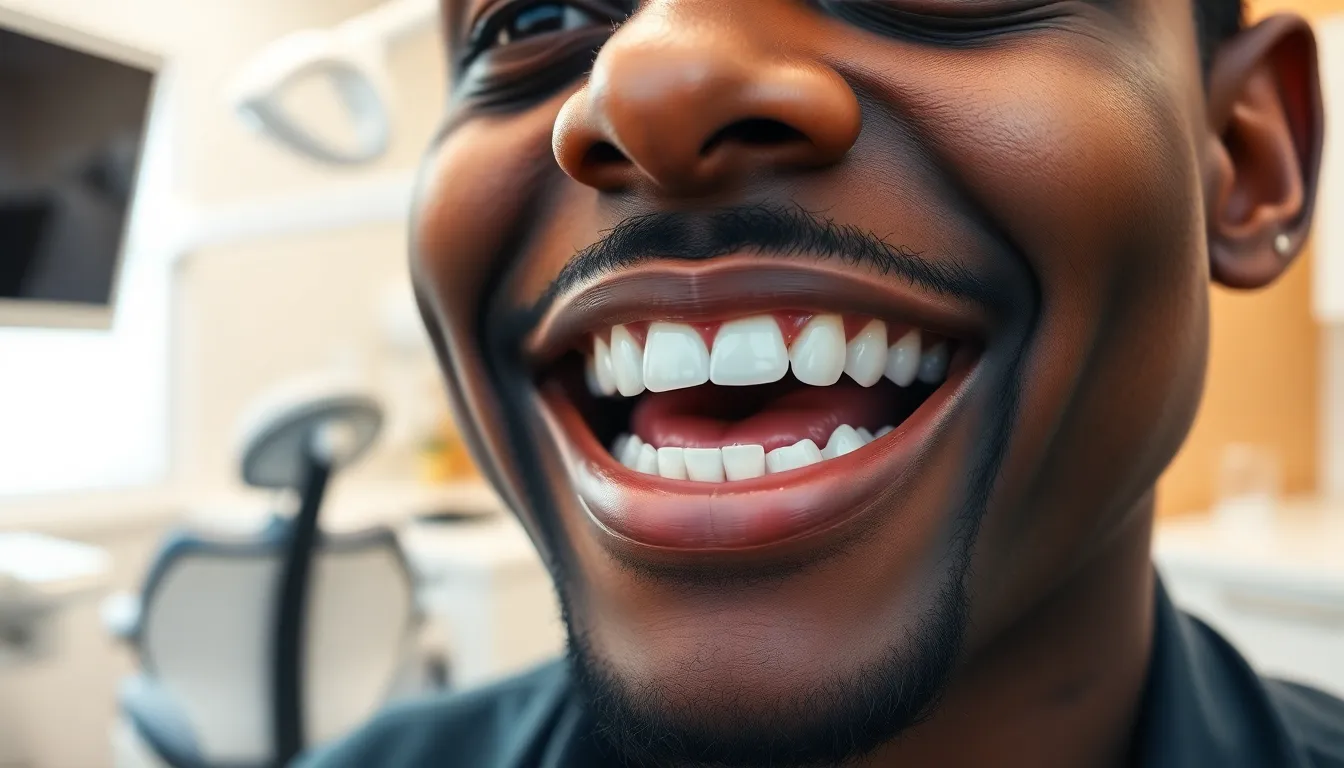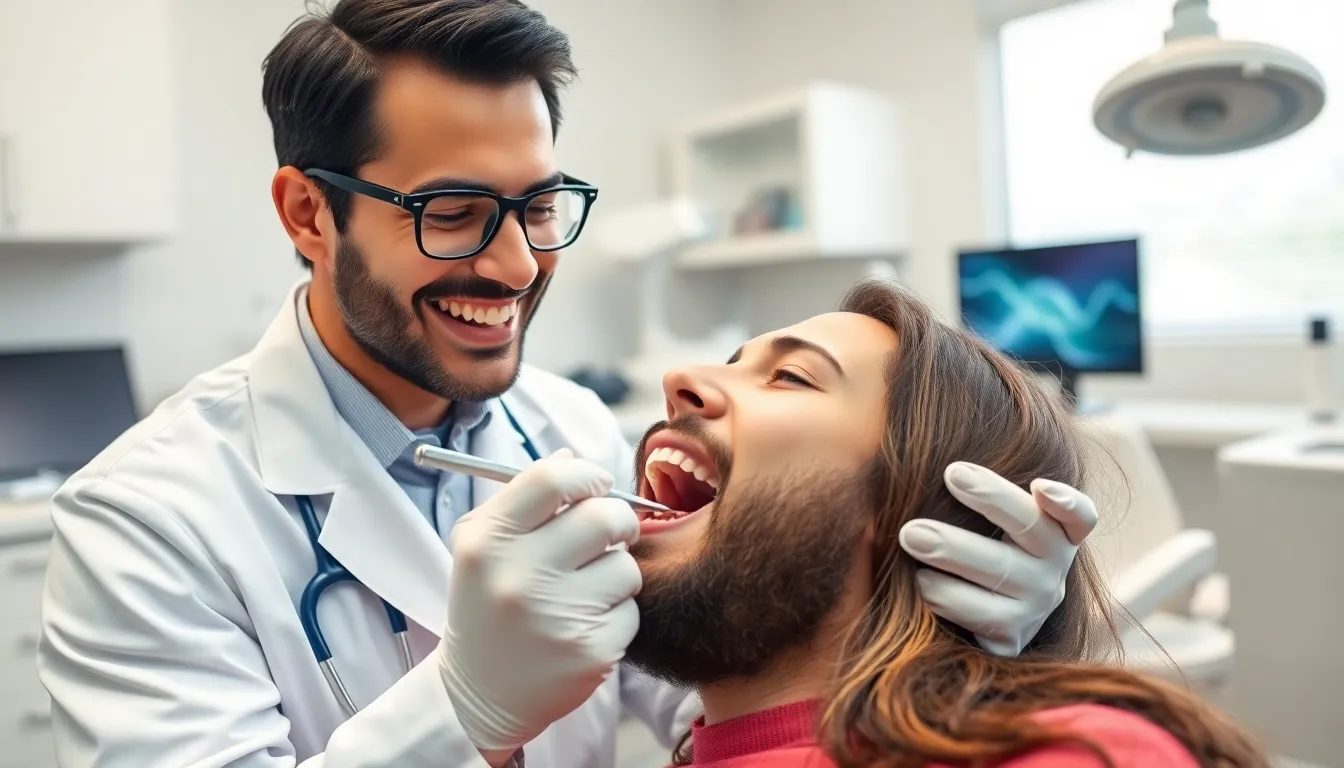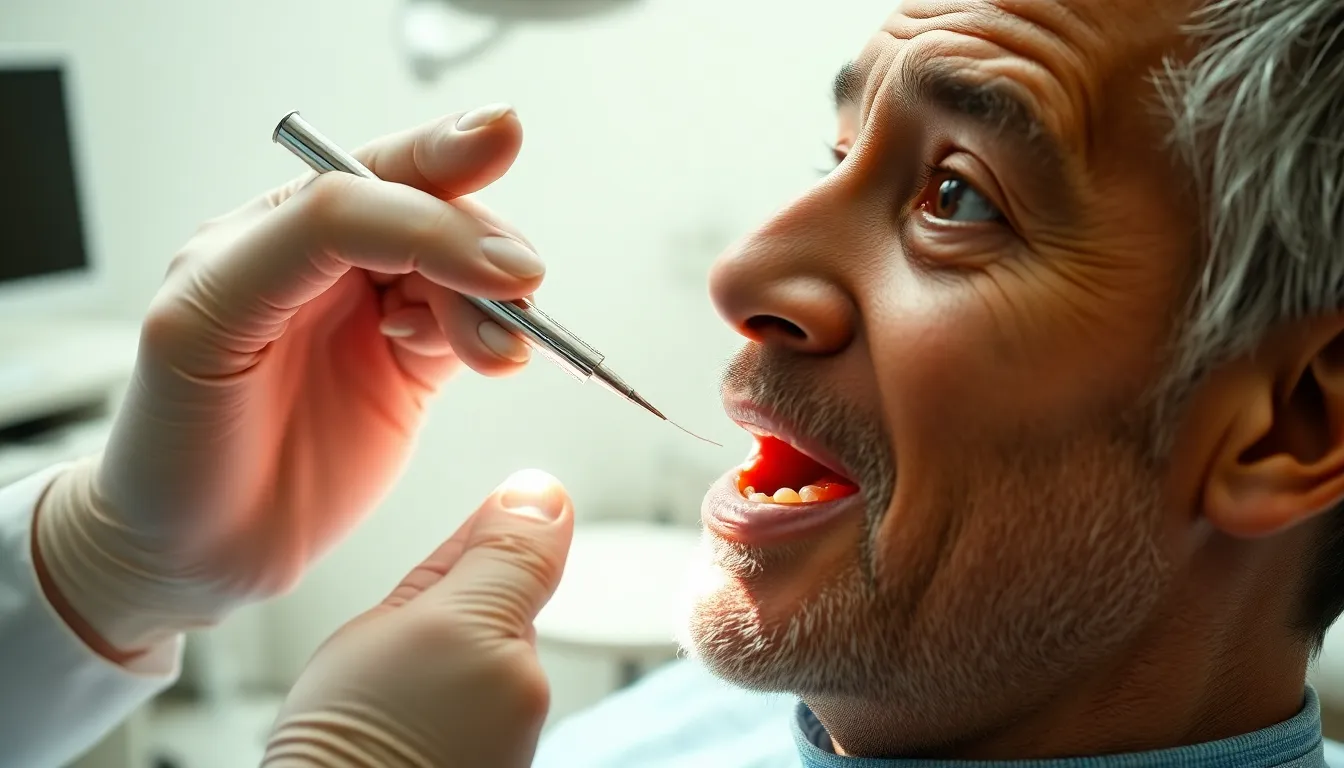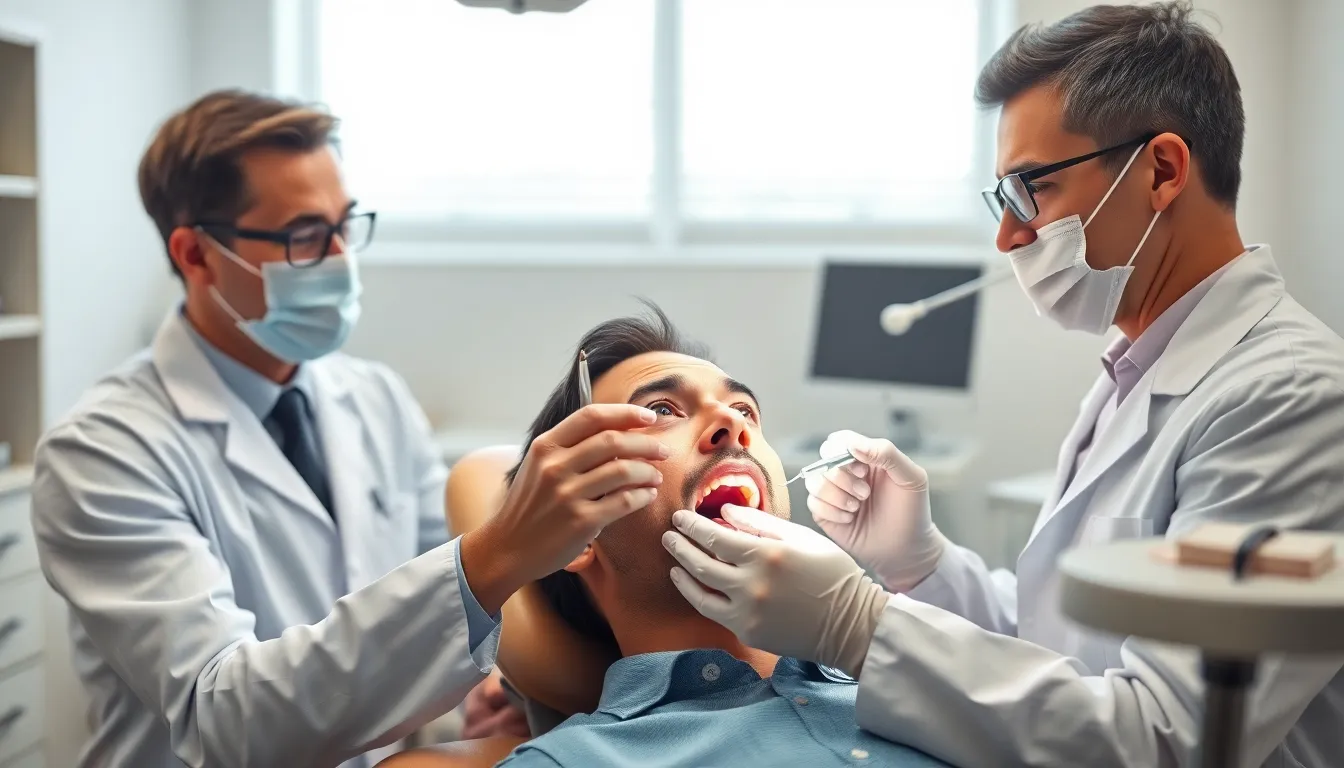Ever wondered what your bite type says about your oral health? Your dental bite—the way your upper and lower teeth fit together when you close your mouth—plays a crucial role in everything from chewing efficiency to speech clarity and even facial appearance.
Understanding the different bite types, from the ideal Class I occlusion to overbites, underbites, crossbites and open bites, can help you identify potential issues before they become serious problems. Misaligned bites often lead to complications including jaw pain, excessive tooth wear, and difficulty maintaining proper oral hygiene. Fortunately, modern dentistry offers many answers for correcting bite problems at any age.
Understanding Different Types of Bites
Your bite type refers to how your upper and lower teeth align when your mouth is closed. Dental professionals classify these alignments into several categories based on the relationship between your teeth and jaws. Each classification helps dentists determine appropriate treatment plans for various dental issues.
Normal Bite (Class I Occlusion)
Class I occlusion represents the ideal bite alignment where your upper teeth slightly overlap your lower teeth. In this arrangement, the first molars meet properly with the upper teeth’s cusps fitting perfectly into the grooves of lower molars. People with Class I occlusion typically experience minimal chewing problems and have balanced facial proportions.
During my years of practice, I’ve noticed patients with normal bites often take their dental harmony for granted. Sarah, a long-term patient, only realized how fortunate her natural alignment was after her sister required extensive orthodontic work for a severe overbite.
Overbite (Class II Malocclusion)
An overbite occurs when your upper front teeth excessively overlap your lower front teeth horizontally. This condition comes in two divisions: Division 1 involves protruding upper front teeth, while Division 2 features upper central incisors tilting inward. Severe overbites can cause your lower teeth to bite into your palate, potentially damaging gum tissue.
Common symptoms include difficulty closing your lips completely, accelerated wear on lower front teeth, and jaw pain. Many overbite patients describe feeling self-conscious about their profile appearance, which often exhibits a receding chin.
Underbite (Class III Malocclusion)
Underbites position your lower teeth in front of your upper teeth when your mouth closes. This misalignment creates a distinct facial profile where your lower jaw appears more prominent than your upper jaw. Patients with underbites frequently experience difficulty biting and chewing certain foods, speech impediments, and excessive wear on front teeth.
One memorable case involved Miguel, a teenager who struggled with confidence due to his underbite. After correction through a combination of orthodontics and oral surgery, his transformation wasn’t just physical—his entire demeanor changed as his self-assurance grew.
Crossbite
Crossbites occur when some upper teeth sit inside your lower teeth rather than outside them when your mouth closes. This misalignment can affect either your front teeth (anterior crossbite) or back teeth (posterior crossbite). Your jaw might shift to one side when closing, creating facial asymmetry over time.
Patients with crossbites often report uneven jaw growth, abnormal tooth wear, and an increased risk of gum recession. Early intervention proves particularly important with crossbites to prevent compensatory growth patterns that become more difficult to correct in adulthood.
Open Bite
Open bites create a vertical gap between your upper and lower teeth when your mouth is closed. Anterior open bites leave space between front teeth, while posterior open bites create gaps between back teeth. This condition frequently results from prolonged thumb-sucking, pacifier use, or tongue thrusting habits.
Open bite patients typically struggle with clear pronunciation of certain sounds, particularly sibilants like “s” and “z.” Food biting and chewing become challenging since front teeth can’t meet properly. Treatment approaches vary based on the cause and severity but often include breaking underlying habits alongside orthodontic intervention.
Normal Bite: The Ideal Dental Alignment

A normal bite represents the perfect alignment between your upper and lower teeth, creating an optimal foundation for dental function, health, and aesthetics. This ideal occlusion allows your teeth to work together efficiently while maintaining proper oral health.
Characteristics of a Normal Bite
The hallmark of a normal bite is the slight overlap of upper front teeth over the lower ones by approximately one-third of their length. Your upper molars fit precisely into the grooves of your lower molars, creating a locking mechanism that enables effective chewing and grinding of food. When you close your jaw, your teeth meet evenly and symmetrically, distributing bite forces balanced across all teeth to prevent excessive wear. The upper dental arch sits slightly wider than the lower arch, contributing to this proper alignment and functional bite relationship.
Dr. Todd B. Harris often tells patients, “I can spot a balanced bite almost immediately because the teeth fit together like perfectly designed puzzle pieces. When everything aligns correctly, there’s a natural harmony in how the mouth functions.”
Benefits of a Properly Aligned Bite
A normal bite enables efficient chewing and proper breakdown of food, directly improving your digestion and nutrient absorption. Properly aligned teeth create fewer hiding spots for bacteria, making them easier to clean and reducing your risk of tooth decay and gum disease. The balanced distribution of forces across your teeth helps prevent temporomandibular joint (TMJ) disorders, jaw pain, and chronic headaches that often plague patients with bite issues.
Your speech clarity depends significantly on proper tooth positioning, as a normal bite supports clear pronunciation and minimizes potential speech impediments. The aesthetic appeal of straight, well-aligned teeth enhances your smile and contributes to greater self-confidence in social and professional settings.
Malocclusions: When Bites Go Wrong

Malocclusions occur when teeth and jaws are misaligned, creating an improper bite that can affect both function and appearance. These bite problems vary in severity and type, with each presenting unique challenges for dental health and quality of life.
Overbite: Upper Teeth Overlapping Lower Teeth
An overbite develops when upper front teeth excessively overlap the lower front teeth vertically. This condition typically corresponds with Class II malocclusion, where the upper jaw or teeth protrude beyond the lower jaw. Many patients with overbites experience jaw pain, especially when chewing tough foods. Dr. Todd B. Harris notes, “Patients with important overbites often don’t realize how much strain they’re putting on their temporomandibular joint until we begin correction and they experience relief for the first time.”
Underbite: Lower Teeth Projecting Beyond Upper Teeth
Underbites feature lower front teeth that project beyond the upper front teeth, creating a distinctive facial profile. This Class III malocclusion involves either an overdeveloped lower jaw or an underdeveloped upper jaw, making it particularly challenging to treat among all bite problems. Patients with underbites frequently report difficulties with chewing efficiency and speech clarity. One patient shared, “Living with an underbite affected my confidence for years. After treatment, I not only noticed improved function but also felt more comfortable smiling in photos.”
Crossbite: Misalignment of Upper and Lower Teeth
Crossbites occur when upper and lower teeth don’t align properly in the horizontal plane. This misalignment can involve upper teeth sitting either inside or outside the lower teeth and may affect front or back teeth. Crossbites often appear in Class I malocclusions where molar positioning remains normal but individual teeth are misaligned. Left untreated, crossbites lead to uneven jaw development and abnormal tooth wear patterns. Dr. Harris emphasizes, “Early intervention for crossbites can prevent asymmetrical facial growth and eliminate the need for more complex treatments later.”
Open Bite: Gaps Between Upper and Lower Teeth
Open bites create a vertical gap between upper and lower teeth when the jaws are closed, preventing proper contact in the biting position. This vertical plane malocclusion causes important difficulties with biting, chewing, and speech articulation. Many patients with open bites struggle with pronouncing certain sounds and may develop compensatory speech patterns. The condition frequently results from prolonged thumb-sucking, tongue thrusting habits, or skeletal discrepancies. Treatment options vary depending on the underlying cause, with approaches ranging from behavior modification techniques to orthodontic intervention and, in severe cases, jaw surgery.
Impact of Bite Type on Oral Health

Malocclusions (misaligned bites) create important consequences for your overall oral health beyond just aesthetic concerns. Your bite type affects everything from how your teeth wear over time to the proper function of your jaw joints and muscles.
Chewing Efficiency and Digestion
Your bite type directly influences how effectively you chew food, which serves as the first step in the digestive process. Proper occlusion allows teeth to break down food particles thoroughly, promoting optimal nutrient absorption and digestion. Patients with malocclusions such as deep overbites or anterior crossbites often struggle with inefficient mastication, leading to larger food particles entering the digestive tract. These larger particles can reduce digestive efficiency and potentially compromise nutrient absorption from your food. Many patients report noticeable improvements in comfort while eating after correction of bite issues.
Dr. Todd B. Harris notes, “I’ve observed countless patients experience dramatic improvements in their eating comfort and digestion after we’ve corrected their bite alignment. One patient with a severe crossbite mentioned she could finally enjoy meals without the jaw fatigue she’d experienced for decades.”
Speech Development and Function
The alignment of your teeth plays a crucial role in speech articulation and clarity. Certain bite types interfere with proper tongue placement and airflow patterns needed for clear pronunciation, particularly with sibilant sounds like “s” and “z.” For example, anterior open bites frequently cause lisping because the tongue pushes forward to close the gap between teeth during speech. Excessive overjet can similarly create challenges with proper articulation of labial sounds. Early diagnosis and correction of bite abnormalities are essential for supporting normal speech development, especially in children when speech patterns are being established.
Speech therapists often collaborate with orthodontists to address speech impediments related to malocclusions. Patients typically notice important improvements in speech clarity following bite correction, particularly those who’ve struggled with exact sound formations throughout their lives.
Treatment Options for Different Bite Types

Modern dentistry offers various effective treatments for correcting different bite types. Your treatment plan will depend on the severity of your malocclusion, age, and exact bite classification.
Orthodontic Answers
Braces and clear aligners represent the most common orthodontic treatments for correcting bite issues. These devices gradually shift teeth into proper alignment, effectively addressing mild to moderate Class I and Class II bites. Clear aligners offer a discreet alternative to traditional metal braces while achieving similar results for many patients. Functional appliances play a crucial role in modifying jaw growth for younger patients, particularly those with Class II malocclusions. These appliances encourage proper lower jaw development and improve bite relationships during crucial growth periods.
Dr. Harris notes, “Many of my patients are surprised by how effectively modern orthodontic answers can transform not just their smile aesthetics, but also their bite function. One patient with a moderate Class II bite experienced complete resolution of her chronic headaches after six months of treatment with clear aligners.”
Surgical Interventions for Severe Cases
Orthognathic surgery becomes necessary for severe Class II or Class III malocclusions with important jaw discrepancies that orthodontics alone cannot correct. This surgical approach repositions the jaws to achieve improved function and facial aesthetics. Combined orthodontic-surgical treatment typically involves orthodontic preparation before surgery and refinement afterward. Orthodontists align teeth to their optimal position within each jaw, then surgeons reposition the jaws correctly relative to each other.
Prevention and Early Intervention

Early orthodontic evaluation provides important benefits for identifying and addressing bite problems before they become more complex. Dental professionals recommend scheduling an assessment for children between ages 7-10, when permanent teeth begin emerging and jaw development is still active. Your child’s orthodontist can spot potential issues during this critical window, allowing for timely intervention that may prevent the need for extensive treatment later.
Early Detection Strategies
Routine dental check-ups form the foundation of early detection for bite problems. During these appointments, dentists evaluate jaw alignment and tooth positioning to identify potential malocclusions. Parents can also watch for warning signs at home, including:
- Difficulty chewing or biting food completely
- Mouth breathing or snoring during sleep
- Lisping or other speech difficulties
- Asymmetrical facial features or jaw positioning
- Teeth grinding or clenching (bruxism)
- Early loss of baby teeth or delayed eruption of permanent teeth
“I’ve seen countless cases where early intervention at ages 7-8 dramatically simplified later orthodontic treatment,” notes Dr. Todd B. Harris. “The difference in treatment complexity and outcomes is remarkable when we can guide jaw growth during development rather than correcting fully formed misalignments.”
Preventive Measures
Certain preventive approaches can minimize the risk of developing bite problems or reduce their severity:
- Breaking thumb-sucking habits by age 4 to prevent open bites
- Using properly fitted pacifiers and limiting their use after age 2
- Addressing tongue thrusting through myofunctional therapy exercises
- Maintaining good oral hygiene to prevent premature tooth loss
- Seeking prompt treatment for severely decayed baby teeth
- Using space maintainers when primary teeth are lost early
Intervention Techniques
Early intervention employs various specialized appliances and techniques designed specifically for growing children:
| Intervention | Best For | How It Works |
|---|---|---|
| Palatal Expansion | Crossbites | Widens the upper jaw to correct alignment and create space |
| Functional Appliances | Class II (Overbites) | Guides lower jaw forward during growth phases |
| Partial Braces | Exact alignment issues | Corrects individual tooth positions before full orthodontics |
| Habit-Breaking Appliances | Open bites | Prevents thumb-sucking and tongue thrusting |
These interventions typically occur during “Phase 1” orthodontics, followed by a rest period to allow for continued growth before potential “Phase 2” treatment with comprehensive braces or aligners if needed.
Benefits of Early Treatment
Early intervention for bite problems delivers multiple advantages beyond just straighter teeth. Children who receive timely treatment experience:
- Reduced likelihood of needing tooth extractions
- Lower risk of dental trauma to protruding front teeth
- Improved facial symmetry and profile
- Enhanced speech development
- Better chewing function and digestion
- Greater self-confidence during formative social years
- Decreased treatment time and complexity in adolescence
One of Dr. Harris’s patients, 8-year-old Emma, had a severe crossbite causing her jaw to shift noticeably when closing her mouth. Through early palatal expansion treatment, her jaw development was guided into proper alignment, eliminating the need for potential jaw surgery later in life. Emma’s parents reported that her confidence improved dramatically once her bite was corrected.
For children exhibiting biting behavior, different intervention strategies apply. Providing appropriate teething toys, responding consistently to incidents, and teaching alternative communication methods can effectively address this developmental phase.
Conclusion
Your bite type affects much more than just how your teeth fit together. It influences your overall oral health chewing ability speech patterns and even your self-confidence.
Understanding your exact bite classification is the first step toward addressing any issues you might have. Whether you’re dealing with an overbite underbite crossbite or open bite modern dentistry offers effective answers for patients of all ages.
Don’t wait until problems become severe. Early intervention especially for children can prevent complex issues later in life. With proper treatment you’ll enjoy improved function enhanced aesthetics and better long-term oral health.
Talk to your dentist about your bite concerns. The right treatment plan can transform not just your smile but your quality of life.
Frequently Asked Questions
What is a normal dental bite?
A normal dental bite (Class I occlusion) is when upper teeth slightly overlap lower teeth, creating optimal foundation for dental function. This alignment allows upper molars to fit precisely into lower molars for effective chewing. A proper bite improves digestion, reduces risks of tooth decay and gum disease, prevents jaw pain, enhances speech clarity, and contributes to a more aesthetically pleasing smile.
How do bite problems affect oral health?
Bite problems (malocclusions) impact more than just appearance. They can cause inefficient chewing, digestive issues, jaw pain, abnormal tooth wear, and speech difficulties. Misaligned teeth are also harder to clean properly, increasing risks of tooth decay and gum disease. TMJ disorders and chronic headaches often result from untreated bite issues, making proper alignment crucial for overall oral health.
What are the different types of bite problems?
The main bite problems include: overbites (upper teeth excessively overlap lower teeth), underbites (lower teeth project beyond upper teeth), crossbites (horizontal misalignment of teeth), and open bites (gaps between upper and lower teeth when mouth is closed). Each type affects function and appearance differently, with specific symptoms and treatment approaches.
Can bite problems affect speech?
Yes, bite problems can significantly impact speech. Certain malocclusions interfere with tongue placement and airflow needed for clear pronunciation. Open bites often cause lisping, while severe overbites or underbites may affect articulation of specific sounds. Many patients report improved speech clarity after orthodontic treatment, highlighting the connection between proper bite alignment and speech development.
At what age should bite problems be addressed?
Orthodontic evaluations are recommended between ages 7-10 when both baby teeth and permanent teeth are present. Early intervention can guide jaw growth and prevent more complex issues. However, treatment is effective at any age. Children show faster results due to ongoing development, but adults can still achieve excellent outcomes with modern orthodontic approaches.
What treatments are available for bite problems?
Modern dentistry offers several effective treatments for bite problems. These include traditional braces and clear aligners for gradual teeth repositioning, functional appliances to promote proper jaw growth in younger patients, and orthognathic surgery for severe cases requiring jaw repositioning. Treatment selection depends on malocclusion severity, patient age, and specific bite classification.
Can thumb-sucking cause bite problems?
Yes, prolonged thumb-sucking beyond age 4-5 can create bite problems, particularly open bites and protruding front teeth. This habit puts pressure on developing teeth and jaw structures, potentially altering their growth pattern. Breaking this habit early through positive reinforcement and awareness is an important preventive measure against developing malocclusions that require orthodontic intervention.
How can I tell if my child has a bite problem?
Watch for warning signs including: difficulty chewing or biting food, mouth breathing, early or late loss of baby teeth, speech difficulties, jaw clicking or pain, and visibly misaligned teeth. Other indicators include teeth grinding, cheek biting, and self-consciousness about smiling. Regular dental check-ups are crucial for early detection of developing bite issues.







